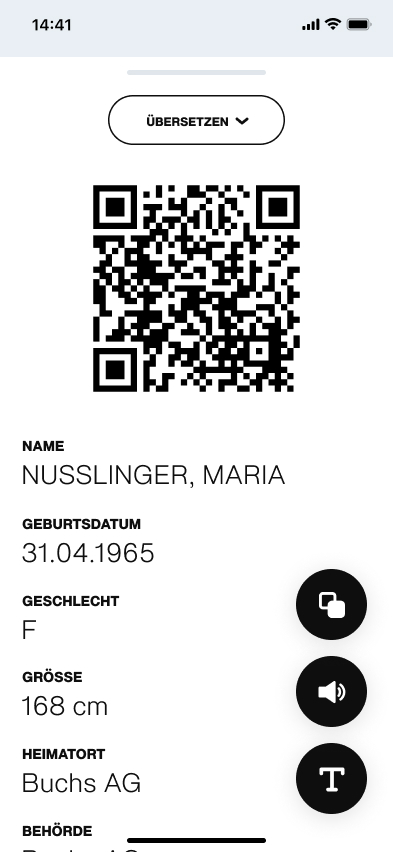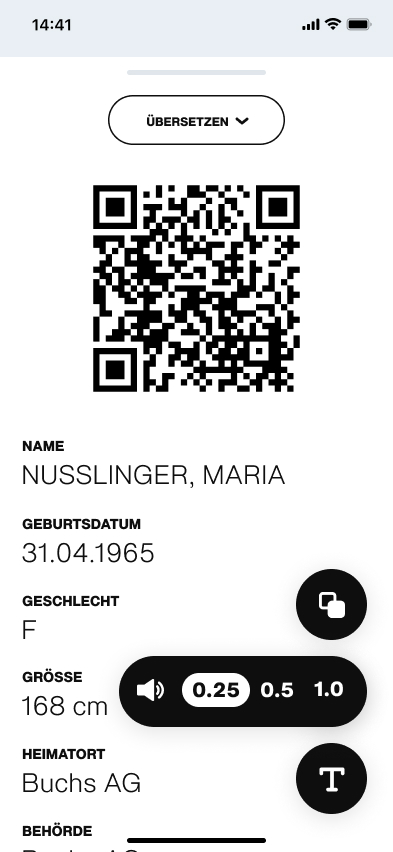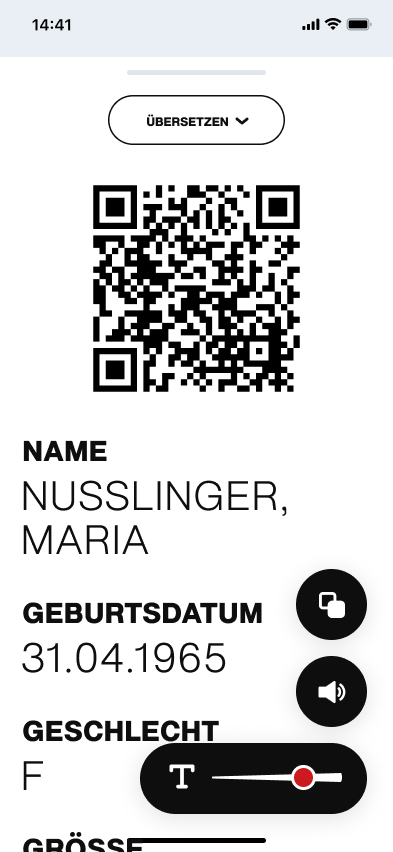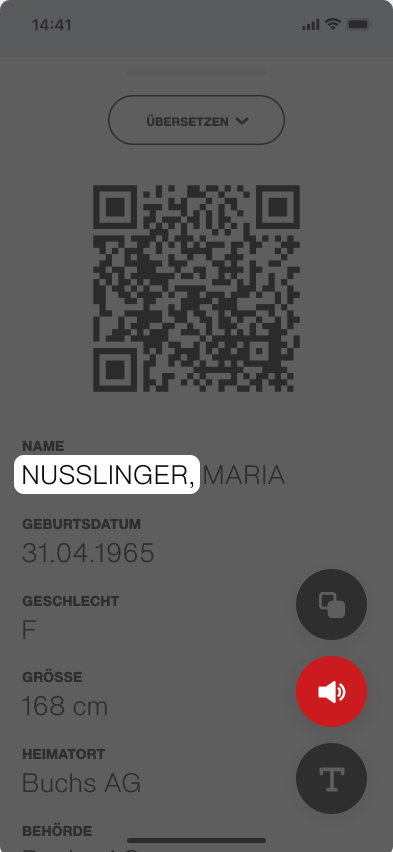Swiss
electronic ID
My design for the Swiss electronic ID was part of a UX challenge. In a span of just four hours, I was tasked with learning about electronic identity cards, conducting quick UX research, and crafting a potential UX/UI design and prototype for a potential Swiss version.
Services
UX Research, UX/UI Design, Prototyping
Company
Swiss Federal Government
via mutoco
Platform
Mobile, Android & iOS
Timeframe
2023
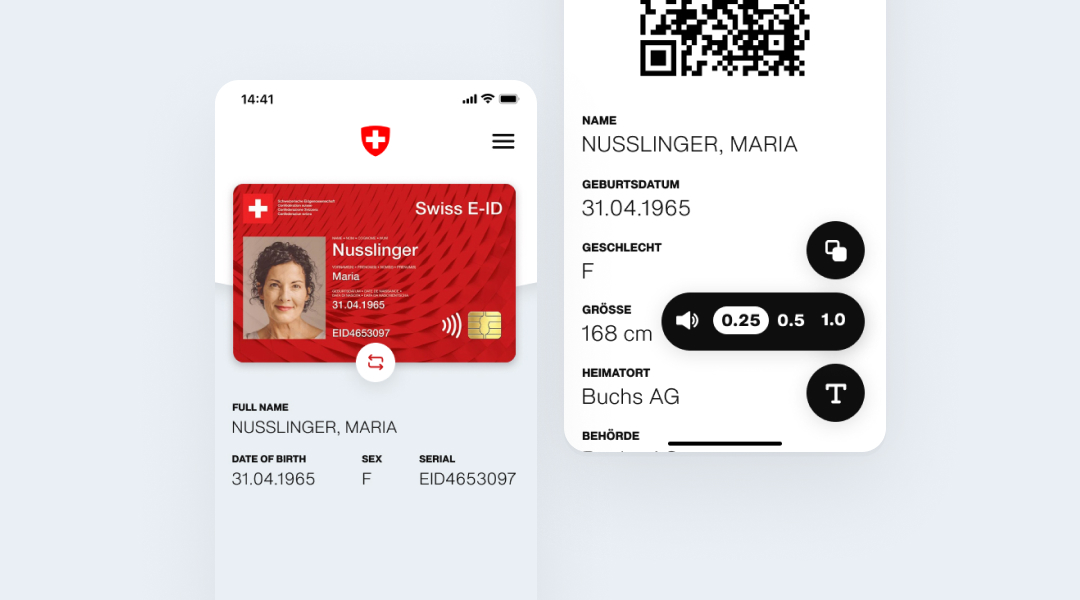
1 ––
Background
I participated in a UX challenge: The task was to create a prototype for an electronic ID app for the Swiss Government in just four hours. My goals were to determine what minimum features this app would need to benefit the Swiss public, and to define how users would interact with the app. With only this brief description in hand, I started my UX challenge on a Sunday.
2 ––
The Challenge
– What are the minimum features a Swiss electronic ID needs to serve the broad Swiss society effectively?
3 ––
Research
To gain a deeper understanding of electronic identity systems, I conducted extensive online research. I investigated in which countries such apps are already in use and how they work. I also examined several Swiss apps that are already popular with the majority of the Swiss population, such as the SBB app, AlertSwiss and SwissCovid.
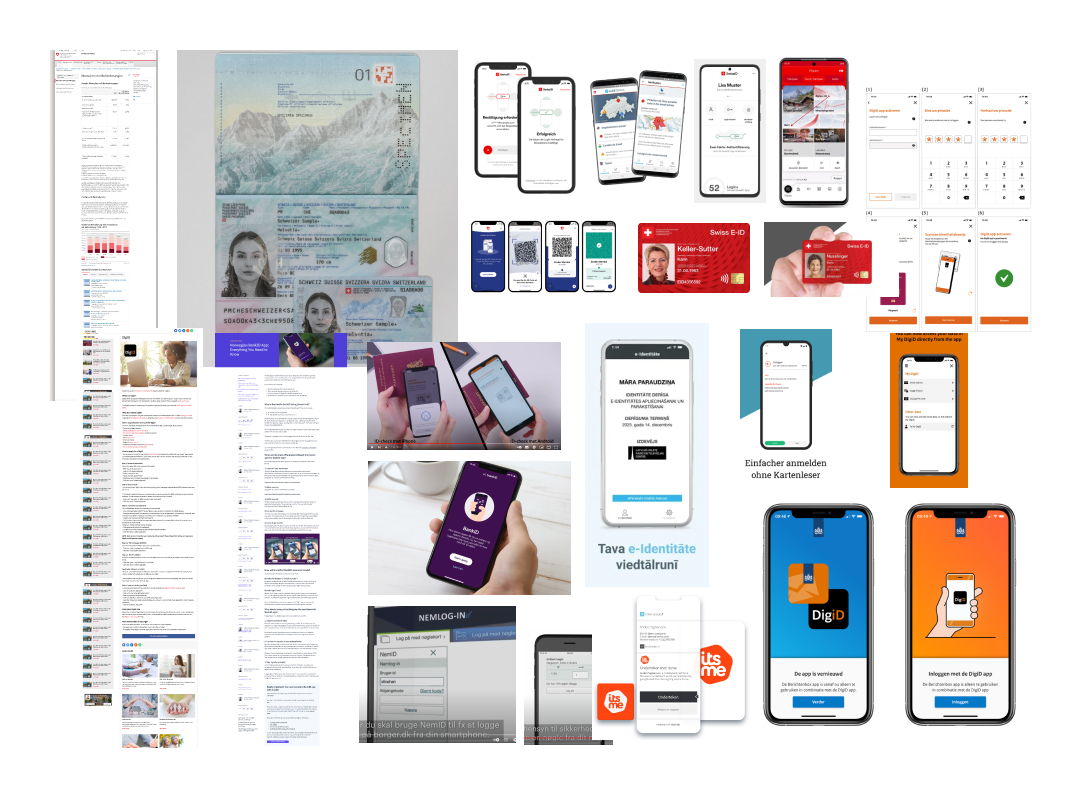
4 ––
Personas
Based on my research and analysis, and given that my prototype needed to be potentially accessible to every age, gender, and persona in Switzerland, I created four personas. This approach allowed me to focus on user motivations, behavior, and potential challenges.
*Due to the fact that the delivery had to be in German, the personas below are in German as well.
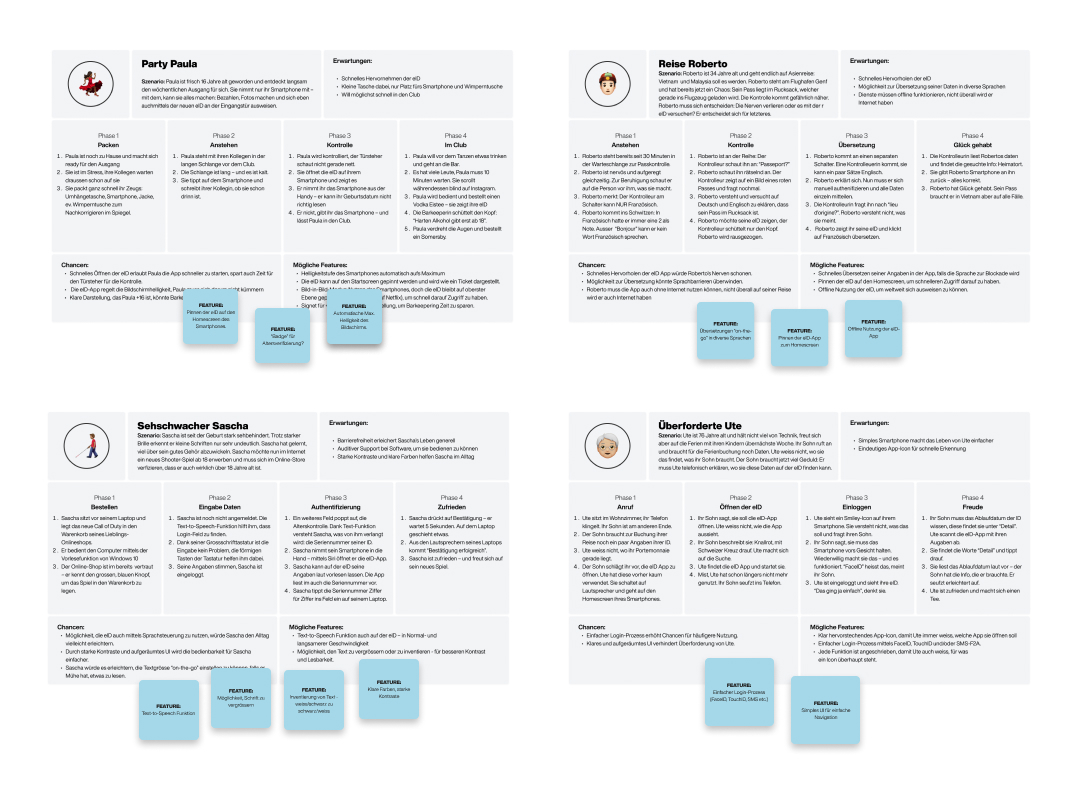
5 ––
User Flow (rapid)
Two hours into the challenge, I began drafting a User Flow for my proposal of the Swiss electronic ID application. Due to time constraints, I intentionally kept the User Flow concise.

7 ––
Prototype (rapid)
To better visualize the interactions and accessibility features, I assembled a rapid prototype in Figma. Below you can see the final delivery.


